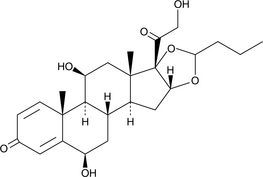Drug Metabolite
Drug metabolite results when a drug is metabolized into a modified form which continues to produce effects. Drug metabolism redox reactions such as heteroatom dealkylations, hydroxylations, heteroatom oxygenations, reductions, and dehydrogenations can yield active metabolites, and in rare cases even conjugation reactions can yield an active metabolite.
Targets for Drug Metabolite
Products for Drug Metabolite
- Cat.No. Nom du produit Informations
-
GC45208
α-hydroxy Metoprolol
α-hydroxy Metoprolol is an active metabolite of the β1-adrenergic receptor blocker metoprolol.

-
GC40480
α-Phenyl-α-(2-pyridyl)acetonitrile
α-Phenyl-α-(2-pyridyl)thioacetamide, also known as antigastrin and SC-15396, is an inhibitor of gastric acid secretion.

-
GC41661
(±)-4-hydroxy Propranolol β-D-Glucuronide
(±)-4-hydroxy Propranolol β-D-glucuronide is a metabolite of (±)-4-hydroxy propranolol, which is a metabolite of propranolol.

-
GC46284
(±)-Cotinine-d3
An internal standard for the quantification of cotinine

-
GC41671
(±)-Equol 4'-sulfate (sodium salt)
(±)-Equol 4'-sulfate is a gut-mediated phase II metabolite of the isoflavonoid phytoestrogen (±)-equol.

-
GC41315
(±)-Ketoprofen Glucuronide
(±)-Ketoprofen glucuronide is a phase II metabolite of the non-steroidal anti-inflammatory drug (NSAID) ketoprofen.

-
GC49875
(±)-N-desmethyl Venlafaxine (hydrochloride)
A minor active metabolite of venlafaxine

-
GC45252
(-)-Sitagliptin Carbamoyl Glucuronide
(-)-Sitagliptin carbamoyl glucuronide is a minor phase II metabolite of the dipeptidyl peptidase 4 (DPP-4) inhibitor (-)-sitagliptin.

-
GC18622
(2'S)-Nicotine-1-oxide
(2'S)-Nicotine-1-oxide is a metabolite of nicotine .
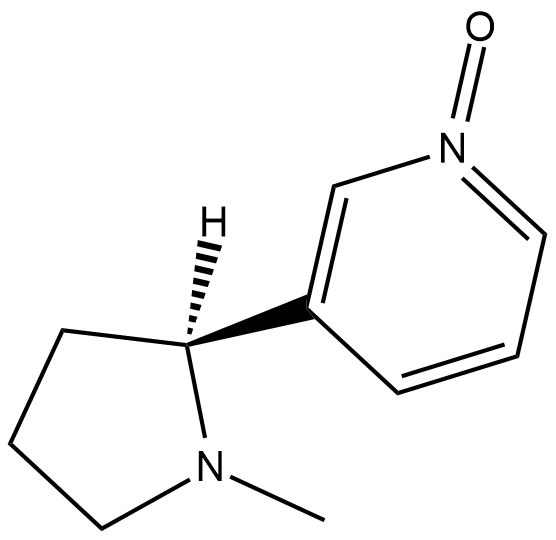
-
GC68509
(25R)-12α-Hydroxyspirost-4-en-3-one
(25R)-12α-Hydroxyspirost-4-en-3-one est un métabolite secondaire produit par l'action de Nocardia globerula sur l'Hécogénine.
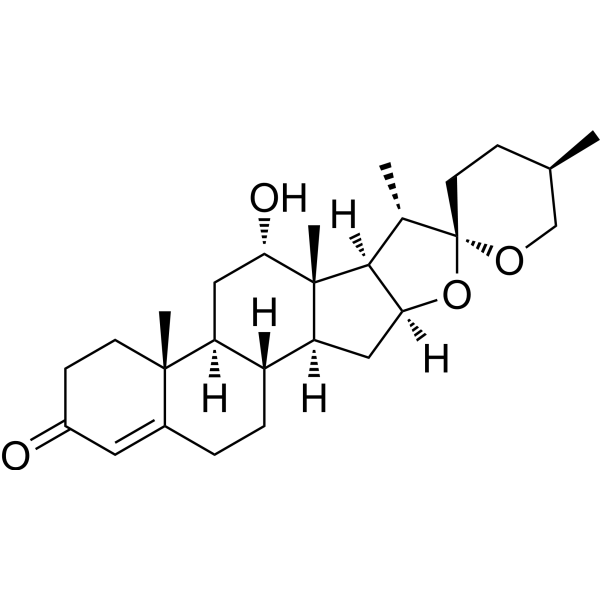
-
GC41694
(3S)-hydroxy Quinidine
(3S)-hydroxy Quinidine is an active quinidine metabolite.

-
GC60399
(E)-10-Hydroxynortriptyline
La (E)-10-hydroxynortriptyline (E-10-OH-NT) est un métabolite de la nortriptyline.
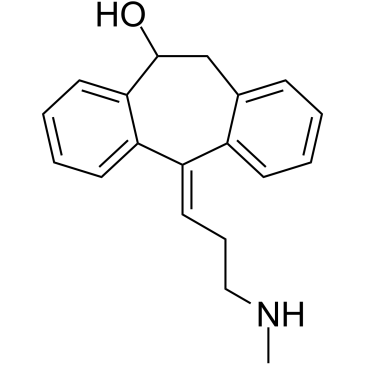
-
GC40286
(E,Z)-2-propyl-2-Pentenoic Acid
(E,Z)-2-propyl-2-Pentenoic acid is a bioactive metabolite of valproic acid that exhibits the same profile and potency of anticonvulsant activity in animal models as its parent compound without any observed teratogenicity and hepatotoxicity.

-
GC49189
(E/Z)-4-hydroxy Tamoxifen-d5
An internal standard for the quantification of (E/Z)-4-hydroxy tamoxifen

-
GC62737
(R)-(-)-O-Desmethyl Venlafaxine D6

-
GC41722
(R,S)-Carvedilol Glucuronide
(R,S)-Carvedilol glucuronide is a racemic mixture of the carvedilol metabolites (R)-carvedilol glucuronide and (S)-carvedilol glucuronide.

-
GC60410
(Rac)-3′-Hydroxy simvastatin
(Rac)-3′ ; - L'hydroxysimvastatine est un métabolite de la simvastatine.
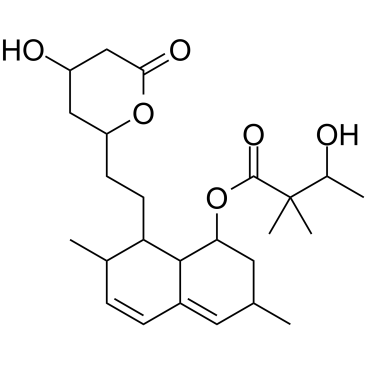
-
GC40145
(S)-Laudanosine
(S)-Laudanosine is the (S) enantiomer of laudanosine, a metabolite of the neuromuscular blocking agents atracurium and cisatracurium.

-
GC49179
(S)-O-Desmethyl Naproxen
A metabolite of (S)-naproxen

-
GC60419
(S)-O-Desmethyl Venlafaxine N-Oxide
(S)-O-Desmethyl Venlafaxine N-Oxide est un N-oxyde de (S)-O-Desmethyl Venlafaxine.
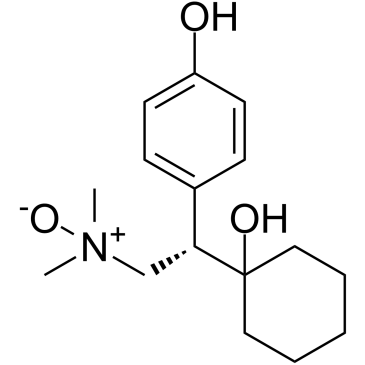
-
GC60427
(Z)-10-Hydroxynortriptyline
La (Z)-10-hydroxynortriptyline est un métabolite de la nortriptyline.
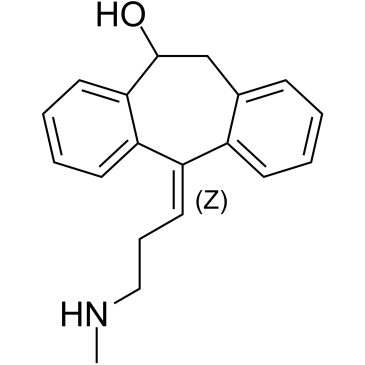
-
GC67761
(Z)-10-Hydroxynortriptyline-d3
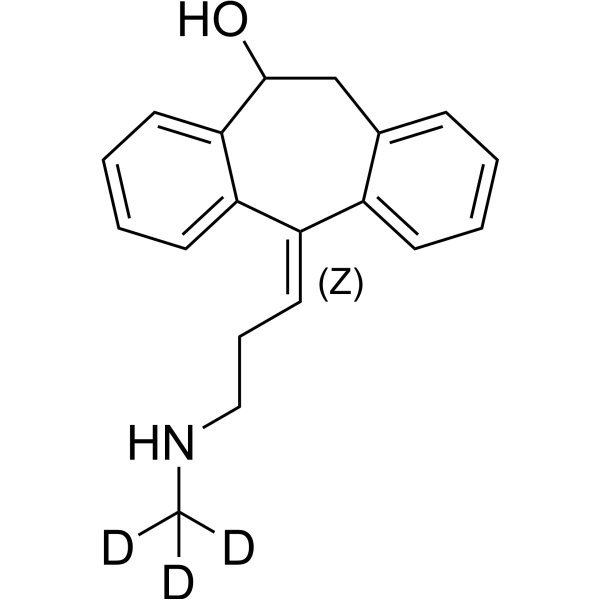
-
GC18596
(±)-2-propyl-4-Pentenoic Acid
L'acide (±)-2-propyl-4-penténoÏque (4-en-VPA) est un métabolite toxique majeur de l'acide valproÏque.

-
GC41995
1'-hydroxy Midazolam
Principal métabolite de l'anesthésique, le midazolam.

-
GC41837
1,3,7-Trimethyluric Acid
L'acide 1,3,7-triméthylurique est le métabolite de la caféine. Le rapport métabolique de l'acide 1,3,7-triméthylurique À la caféine peut être évalué en tant que biomarqueur pour décrire la variabilité de l'activité du CYP3A dans une cohorte.

-
GC46387
1,3,7-Trimethyluric Acid-d9
An internal standard for the quantification of 1,3,7-trimethyluric acid

-
GC49294
1-(4-Chlorobenzhydryl)piperazine
An inactive metabolite of meclizine and chlorcyclizine

-
GC49366
1-Salicylate Glucuronide
A metabolite of salicylic acid and aspirin

-
GC49820
10,11-dihydro-10,11-dihydroxy Carbamazepine
A metabolite of carbamazepine and oxcarbazepine

-
GC66057
10,11-Dihydrocarbamazepine
La 10,11-dihydrocarbamazépine est le métabolite actif de l'oxcarbazépine. La 10,11-dihydrocarbamazépine est également un intermédiaire. L'oxcarbazépine est rapidement et presque complètement convertie en 10,11-dihydrocarbamazépine avec une efficacité anticonvulsivante probable.

-
GC49118
10-hydroxy Warfarin
A metabolite of (R)-warfarin

-
GC49759
13C17-Mycophenolic Acid
An internal standard for the quantification of mycophenolic acid

-
GC19442
15-Acetyldeoxy Nivalenol
Le 15-acétyldésoxy nivalénol est un trichothécène hautement toxique présent dans les céréales, et un métabolite du désoxynivalénol, présente une toxicité pour les cellules HepG2.

-
GC41937
15-keto-17-phenyl trinor Prostaglandin F2α ethyl amide
Bimatoprost is the Allergan trade name for 17-phenyl trinor prostaglandin F2α ethyl amide (17-phenyl trinor PGF2α ethyl amide), an F-series PG analog which has been approved for use as an ocular hypotensive drug.
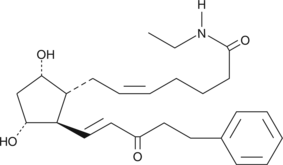
-
GC41309
16α-hydroxy Prednisolone
16α-hydroxy Prednisolone est un métabolite stéréosélectif de l'épimère 22(R) du budésonide glucocorticoÏde via les enzymes du cytochrome P450 3A (CYP3A).

-
GC41300
17β-hydroxy Exemestane
17β-hydroxy Exemestane is the primary active metabolite of exemestane.

-
GC49823
2′-C-β-Methylguanosine
An active nucleoside metabolite of BMS-986094

-
GC46508
2',2'-Difluoro-2'-deoxyuridine
An active metabolite of gemcitabine

-
GC49159
2-(1-Piperazinyl)pyrimidine
An α2-AR antagonist and active metabolite of azapirones

-
GC49330
2-(2-Aminoethyl)-3-(4-chlorophenyl)-3-hydroxyisoindol-1-one (hydrochloride)
A metabolite of mazindol

-
GC52029
2-Aminoflubendazole
Le 2-aminoflubendazole est le métabolite des benzimidazoles.

-
GC46539
2-Chloroadenine
A heterocyclic building block

-
GC40675
2-deoxy-Artemisinin
2-deoxy-Artemisinin is an inactive metabolite of the antimalarial agent artemisinin.

-
GC35090
2-Hydroxy atorvastatin calcium salt
Le sel de calcium d'atorvastatine 2-hydroxy est un métabolite hydroxy du sel de calcium d'atorvastatine.
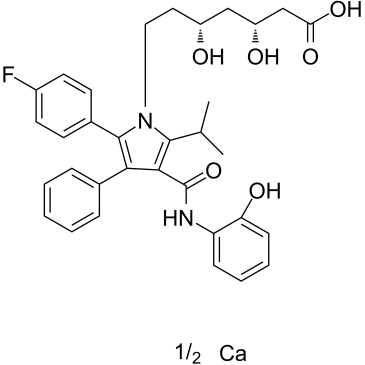
-
GC60474
2-Hydroxy atorvastatin lactone
La 2-hydroxy atorvastatine lactone est un métabolite de l'atorvastatine.
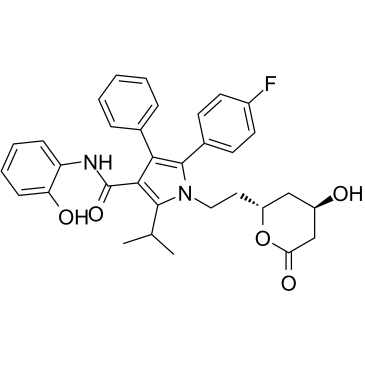
-
GC64336
2-Hydroxyemodin
La 2-hydroxyémodine est un métabolite actif de l'émodine dans les microsomes hépatiques.
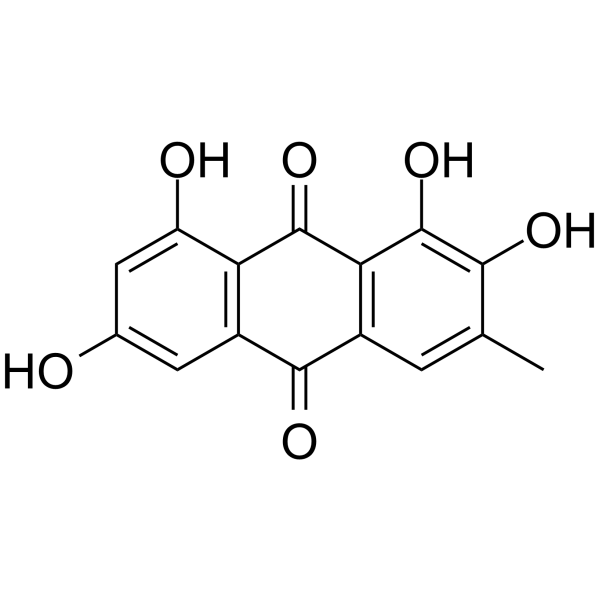
-
GC42189
2-oxo Clopidogrel
2-oxo Clopidogrel is an intermediary metabolite of clopidogrel.

-
GC40968
21-hydroxy Eplerenone
21-hydroxy Eplerenone is a major metabolite of the mineralocorticoid receptor antagonist eplerenone.

-
GC35079
24, 25-Dihydroxy VD2
Le 24, 25-dihydroxy VD2 est un métabolite hydroxylé de la vitamine D2 ; un analogue synthétique de la vitamine D.
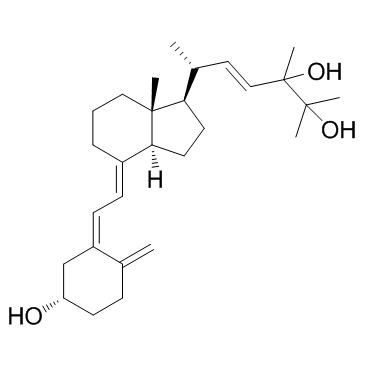
-
GC49365
25-Desacetyl Rifampicin
A major active metabolite of rifampicin

-
GC41480
3'-hydroxy Lidocaine
3'-hydroxy Lidocaine is an active metabolite of lidocaine formed by the cytochrome P450 (CYP) isoforms CYP1A2 and CYP3A4.

-
GC39611
3'-Hydroxy Repaglinide
Le 3'-hydroxyrépaglinide est l'un des principaux métabolites CYP2C8 du répaglinide.
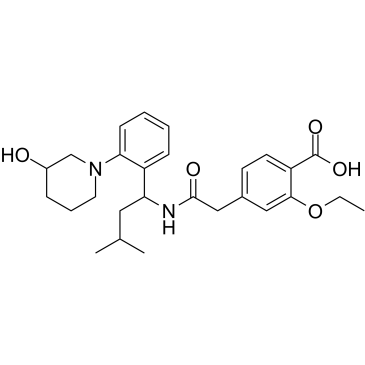
-
GC60500
3'-Hydroxy Repaglinide D5
Le 3'-hydroxy répaglinide D5 est le 3'-hydroxy répaglinide marqué au deutérium.
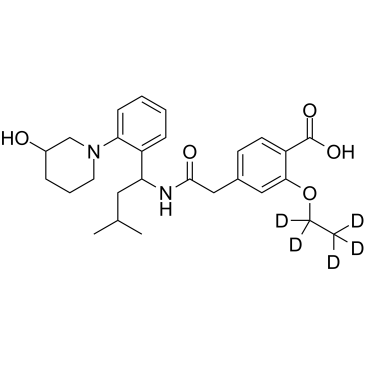
-
GC68082
3,4,5-Trimethoxyphenylacetic acid

-
GC39841
3,4-Dehydro Cilostazol
Le 3,4-déhydro cilostazol (OPC-13015) est un métabolite actif du cilostazol.
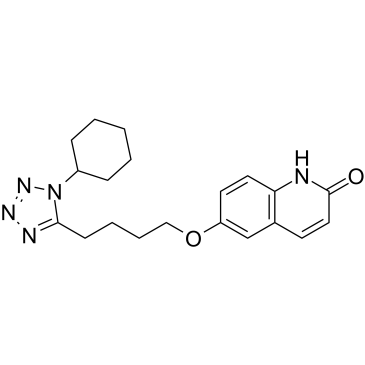
-
GC52324
3-(3-Hydroxyphenyl)propionic Acid sulfate
A metabolite of certain phenols and glycosides

-
GC42198
3-(4-Chlorophenyl)-4-hydroxybutyric Acid (sodium salt)
An inactive metabolite of baclofen
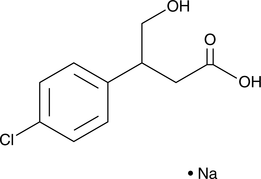
-
GC46583
3-Amino-2,6-Piperidinedione
An active metabolite of (±)-thalidomide

-
GC67902
3-Amino-2-oxazolidinone-d4

-
GC42274
3-hydroxy Darifenacin
3-hydroxy Darifenacin is a metabolite of darifenacin.

-
GC42275
3-hydroxy Desloratidine
3-hydroxy Desloratidine is a major metabolite of desloratadine , a tricyclic antagonist of the histamine H1 receptor.

-
GC41565
3-hydroxy Medetomidine
3-hydroxy Medetomidine is a metabolite of the α2-adrenergic receptor agonist medetomidine.

-
GC48457
3-keto Fusidic Acid
An active metabolite of fusidic acid

-
GC33738
3-Methoxytyramine hydrochloride (3-O-methyl Dopamine hydrochloride)
Le chlorhydrate de 3-méthoxytyramine (chlorhydrate de 3-O-méthyl dopamine) est un métabolite inactif de la dopamine qui peut activer le récepteur 1 associé aux traces d'amines (TAAR1).
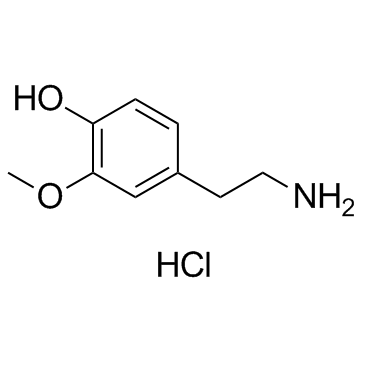
-
GC68324
3-Methoxytyramine-d4 hydrochloride

-
GC49869
3-Methoxytyrosine
An active metabolite of L-DOPA

-
GC42307
3-O-methyl-L-DOPA (hydrate)
3-O-methyl-L-DOPA is a metabolite of L-DOPA, produced by the activity of catechol O-methyltransferase.

-
GC49367
4’-hydroxy Atomoxetine Glucuronide (hydrate)
A metabolite of atomoxetine

-
GC49252
4’-hydroxy Trazodone
A metabolite of trazodone

-
GC18527
4'-hydroxy Flurbiprofen
A major active metabolite of flurbiprofen
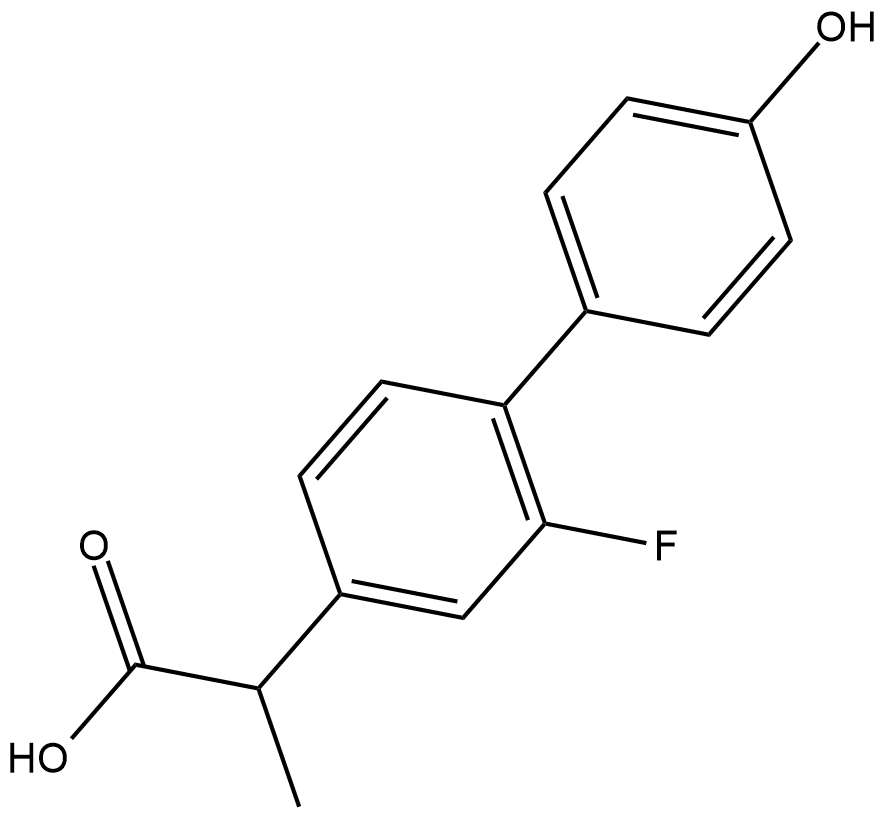
-
GC49752
4,5-Desisopropylidene Topiramate
An inactive metabolite of topiramate

-
GC49337
4-Acetamidobenzenesulfonamide
A metabolite of asulam and sulfanilamide

-
GC42370
4-desmethoxy Omeprazole
Le 4-desméthoxy oméprazole est le métabolite actif de l'oméprazole.

-
GC18194
4-Epidoxycycline
4-Epidoxycycline is the 4-epimer hepatic metabolite of the antibiotic doxycycline .
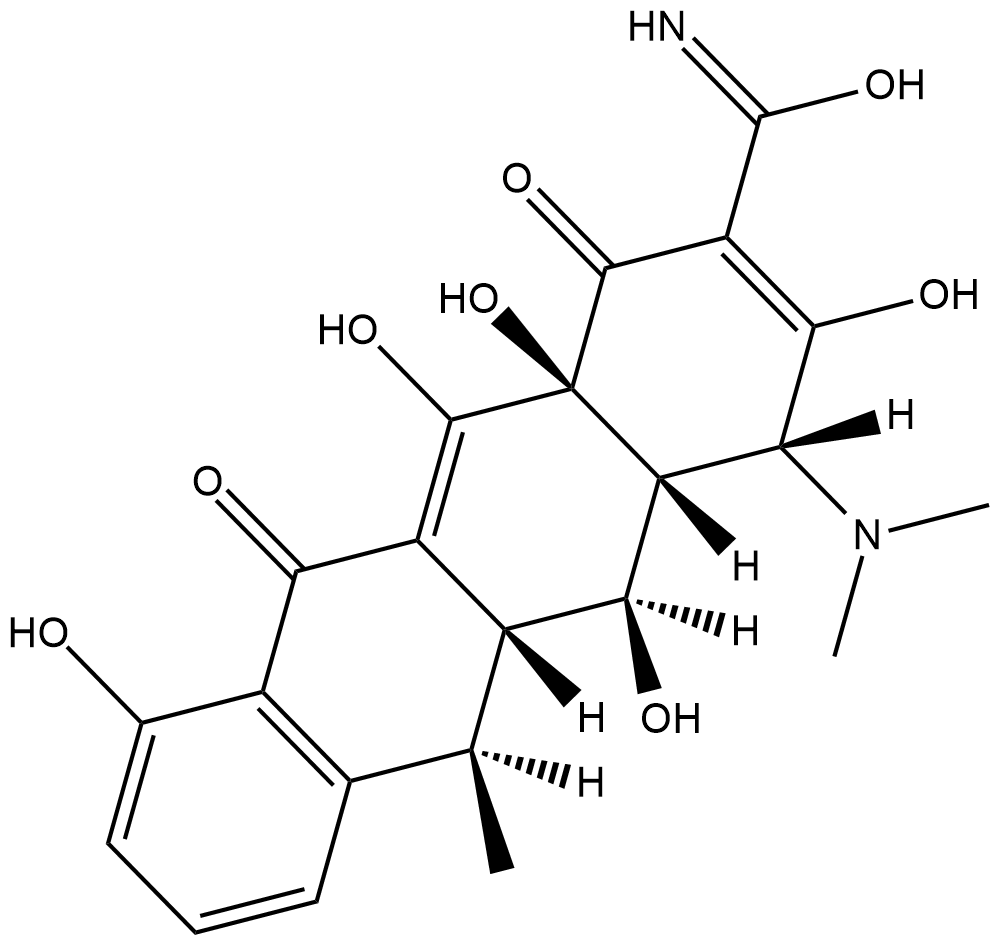
-
GC42401
4-hydroperoxy Cyclophosphamide
Un analogue activé de la cyclophosphamide.

-
GC42405
4-hydroxy Atorvastatin (calcium salt)
4-hydroxy Atorvastatin is a metabolite of atorvastatin, an HMG-CoA reductase inhibitor present in formulations that have been used to treat hypercholesterolemia and certain dyslipidemias.

-
GC18425
4-hydroxy Atorvastatin lactone
4-hydroxy Atorvastatin lactone is a metabolite of atorvastatin , an HMG-CoA reductase inhibitor present in formulations that have been used to treat hypercholesterolemia and certain dyslipidemias.
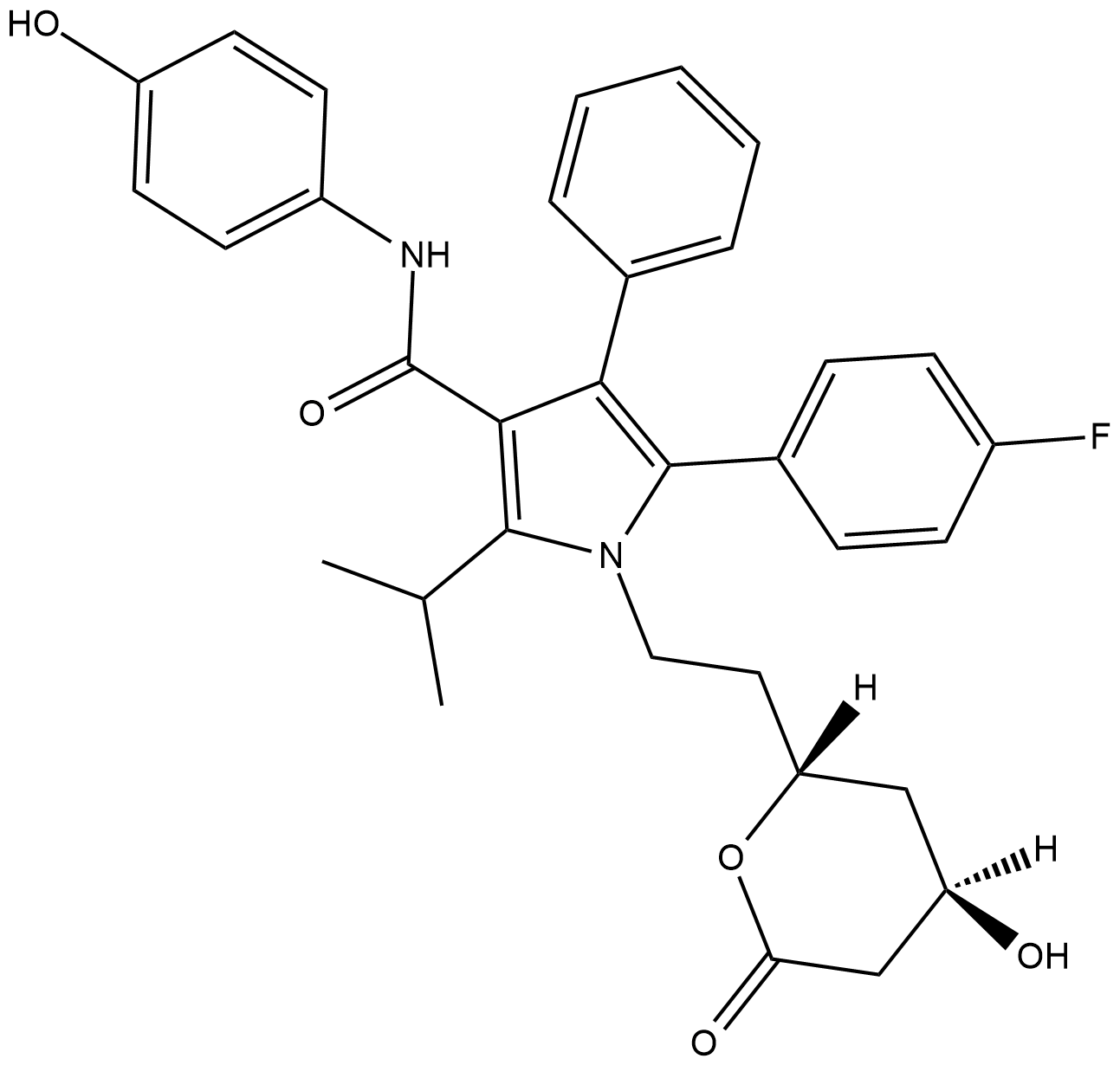
-
GC42407
4-hydroxy Diclofenac
Le 4-hydroxy diclofénac est un métabolite actif du diclofénac par voie orale par le cytochrome P450 2C9 (CYP2C9).
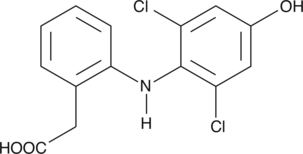
-
GC49575
4-hydroxy Omeprazole sulfide
A metabolite of omeprazole

-
GC40879
4-hydroxy Solifenacin N-oxide
4-hydroxy Solifenacin N-oxide is an N-oxide form of 4-hydroxy solifenacin, the major metabolite of solifenacin .

-
GC42415
4-hydroxy Valsartan
4-hydroxy Valsartan is a major metabolite of the angiotensin II type 1 (AT1) receptor antagonist valsartan.

-
GC18417
4-hydroxy Xylazine
4-hydroxy Xylazine est un métabolite de la xylazine.
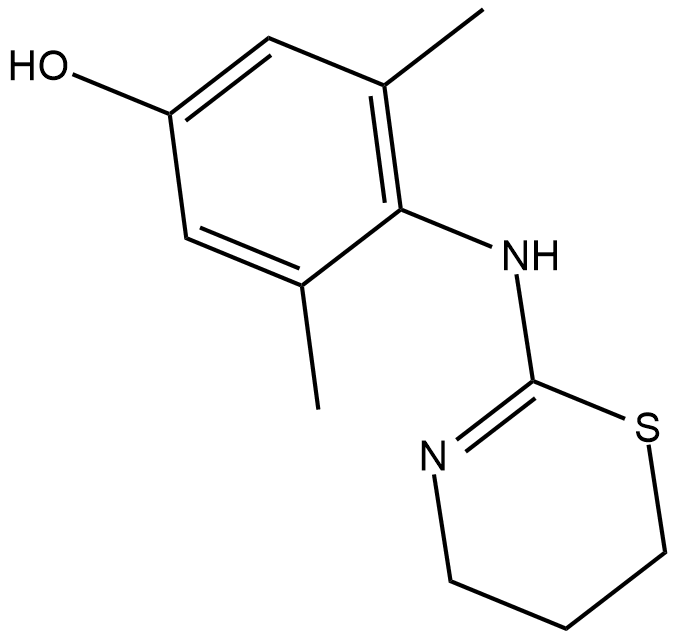
-
GC39307
4-Methylamino antipyrine
La 4-méthylamino antipyrine est un métabolite actif du métamizole.
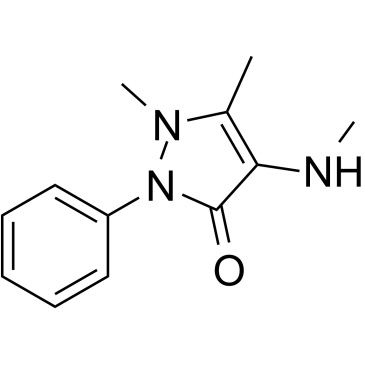
-
GC60523
4-Methylamino antipyrine hydrochloride
Le chlorhydrate de 4-méthylamino antipyrine est un métabolite actif du métamizole.
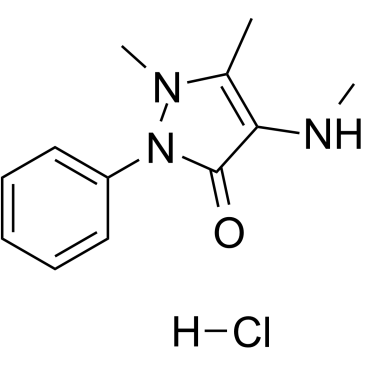
-
GC49127
4-oxo Cyclophosphamide
An inactive metabolite of cyclophosphamide

-
GC41399
5α-dihydro Levonorgestrel
5α-dihydro Levonorgestrel is a metabolite of the synthetic progestin levonorgestrel.

-
GC18582
5'-hydroxy Meloxicam
A metabolite of meloxicam
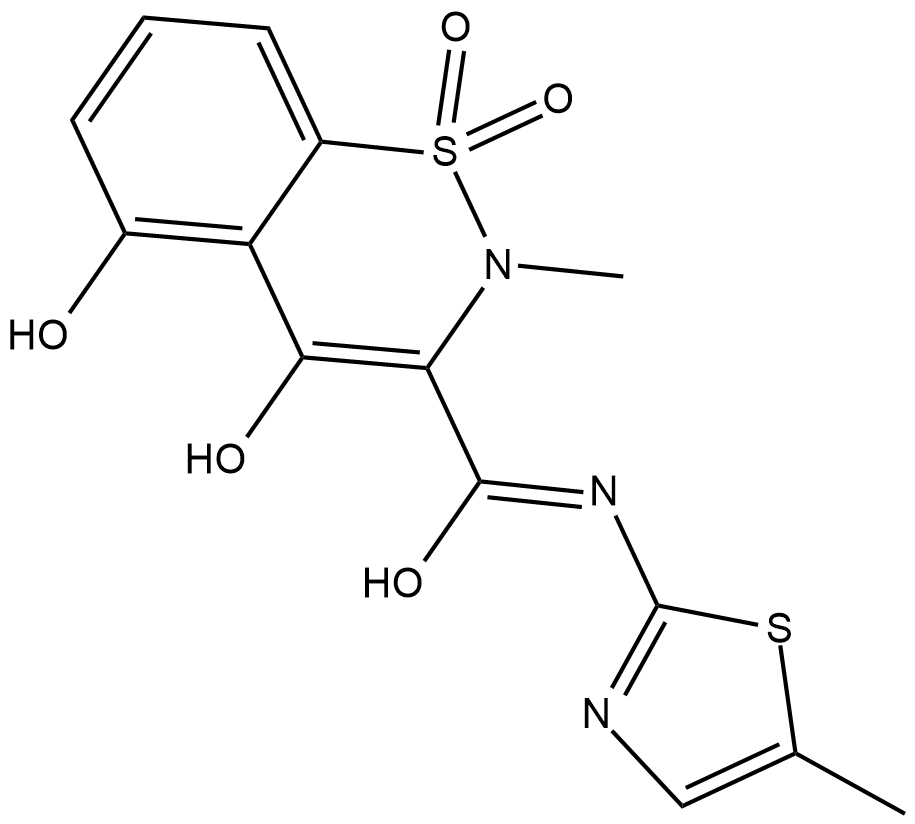
-
GC18542
5,6-dihydro-5-Fluorouracil
5,6-dihydro-5-Fluorouracil (5-FUH2) is formed by the hydrogenation of 5-fluorouracil via the enzyme dihydropyrimidine dehydrogenase (DPD).
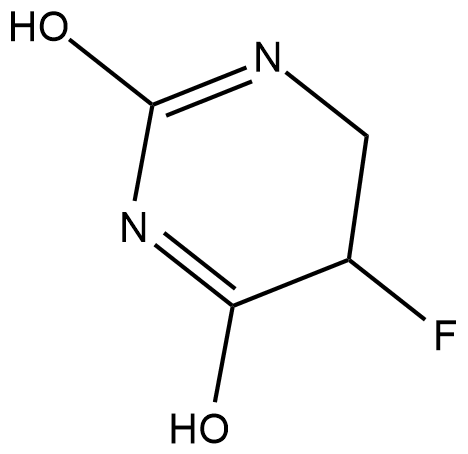
-
GC18466
5,6-epoxy-13-cis Retinoic Acid
5,6-epoxy-13-cis Retinoic acid is a metabolite of 13-cis retinoic acid.
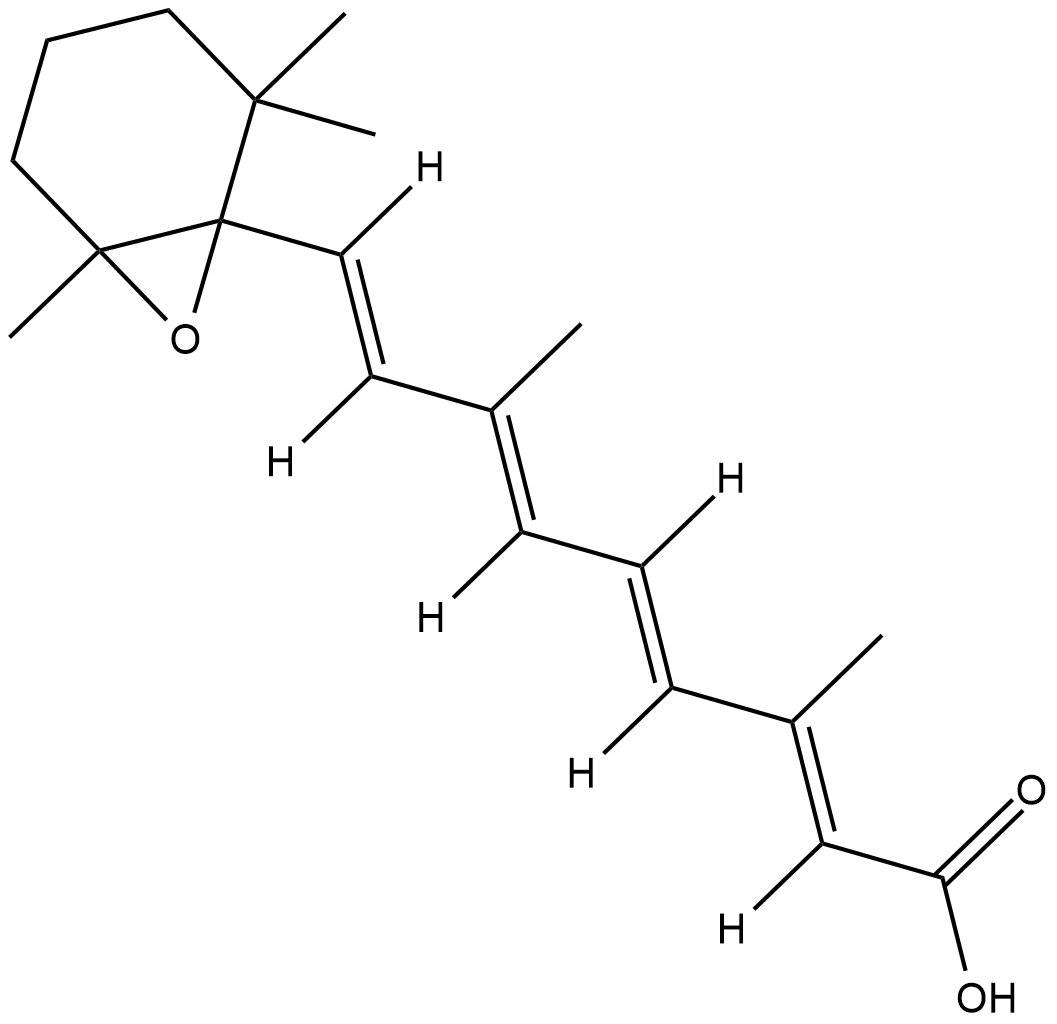
-
GC52227
5-(3',4'-Dihydroxyphenyl)-γ-Valerolactone
An active metabolite of various polyphenols

-
GC49655
5-hydroxy Buspirone
A metabolite of buspirone

-
GC42546
5-hydroxy Diclofenac
5-hydroxy Diclofenac is a metabolite of the NSAID diclofenac formed by the cytochrome P450 (CYP) isoform CYP3A4.

-
GC49119
5-hydroxy Flunixin
A metabolite of flunixin

-
GC49315
5-hydroxy Indomethacin
A metabolite of indomethacin

-
GC41312
5-hydroxy Omeprazole
5-hydroxy Omeprazole is a major metabolite of omeprazole, an inhibitor of the gastric H+/K+-ATPase pump.
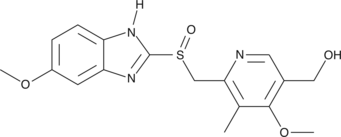
-
GC42549
5-hydroxy Thiabendazole
5-hydroxy Thiabendazole (5-OH TBZ) is a major metabolite of the anthelmintic thiabendazole.

-
GC42550
5-hydroxy-6-methoxy (S)-Duloxetine
5-hydroxy-6-methoxy (S)-Duloxetine is a metabolite of (S)-duloxetine.

-
GC42551
5-hydroxymethyl Tolterodine (formate)
5-hydroxymethyl Tolterodine is an active metabolite of the muscarinic acetylcholine receptor antagonists tolterodine and fesoterodine.

-
GC42586
6α-hydroxy Paclitaxel
6α-hydroxy Paclitaxel est un métabolite primaire du Paclitaxel. 6α-hydroxy Le paclitaxel conserve un effet dépendant du temps sur les polypeptides transporteurs d'anions organiques 1B1/SLCO1B1 (OATP1B1) avec une puissance d'inhibition similaire À celle du paclitaxel, alors qu'il n'a plus montré d'inhibition dépendante du temps de l'OATP1B3. 6α-hydroxy Paclitaxel peut être utilisé pour la recherche sur le cancer.

-
GC49676
6β-hydroxy Budesonide
A metabolite of budesonide
